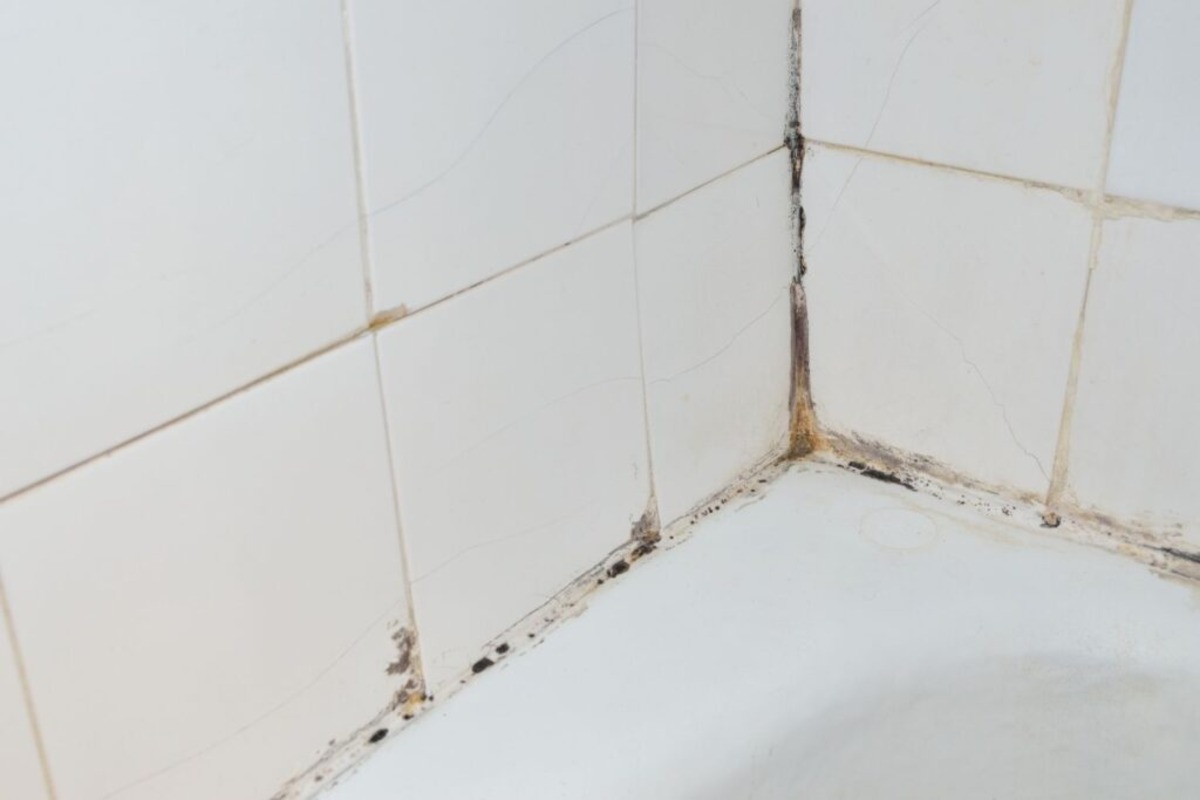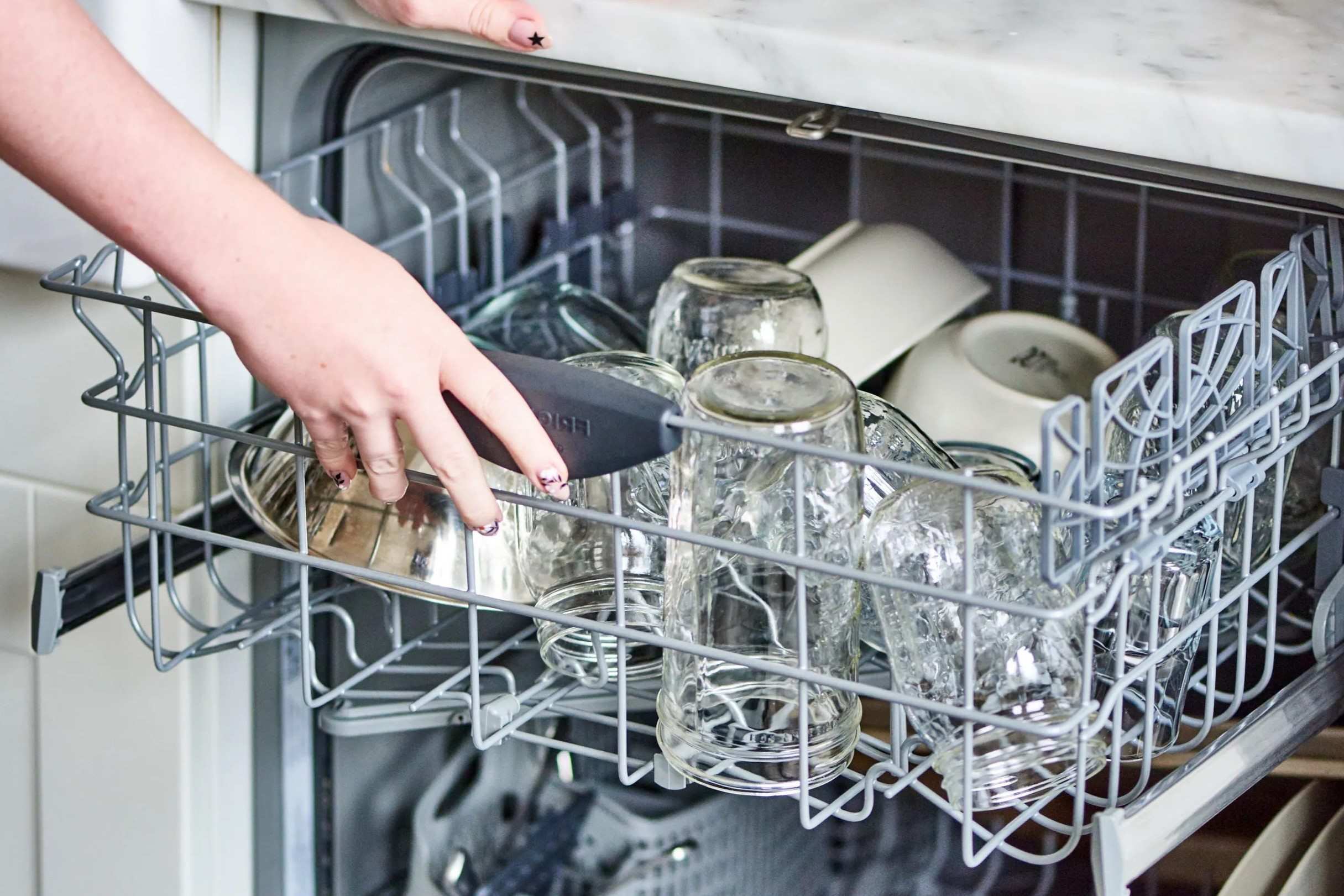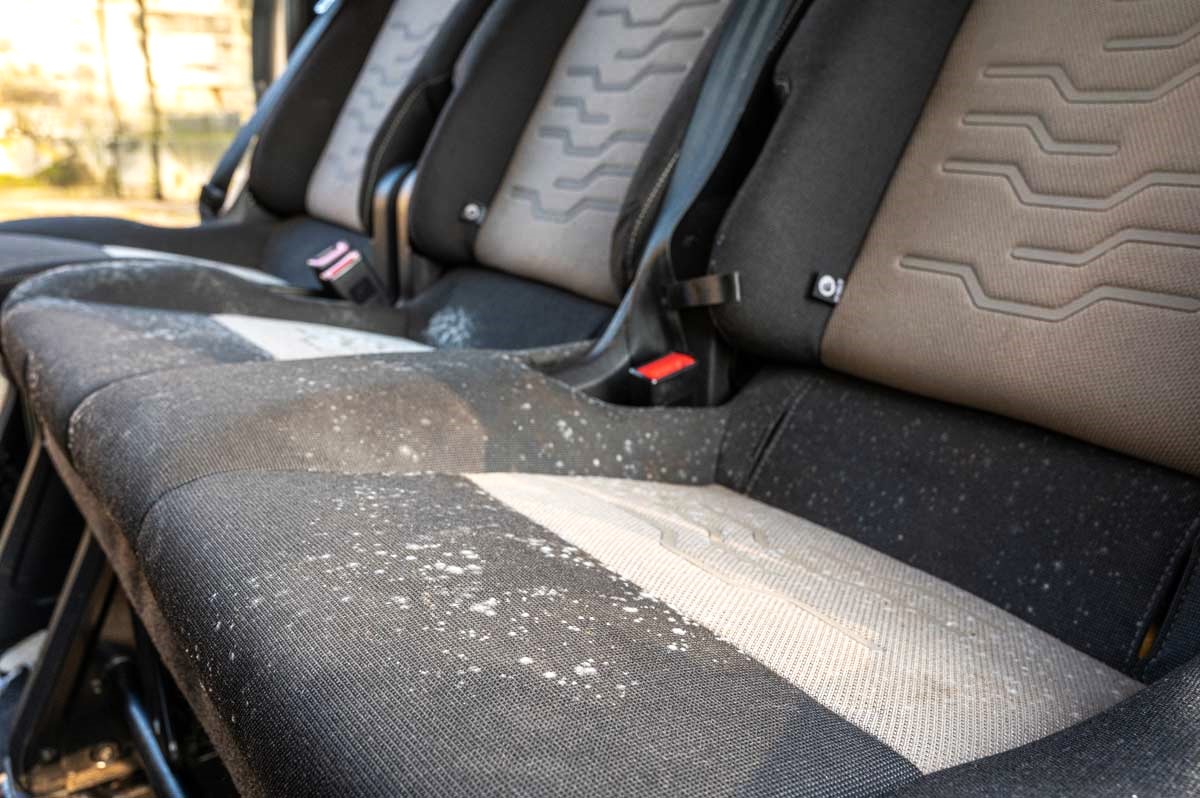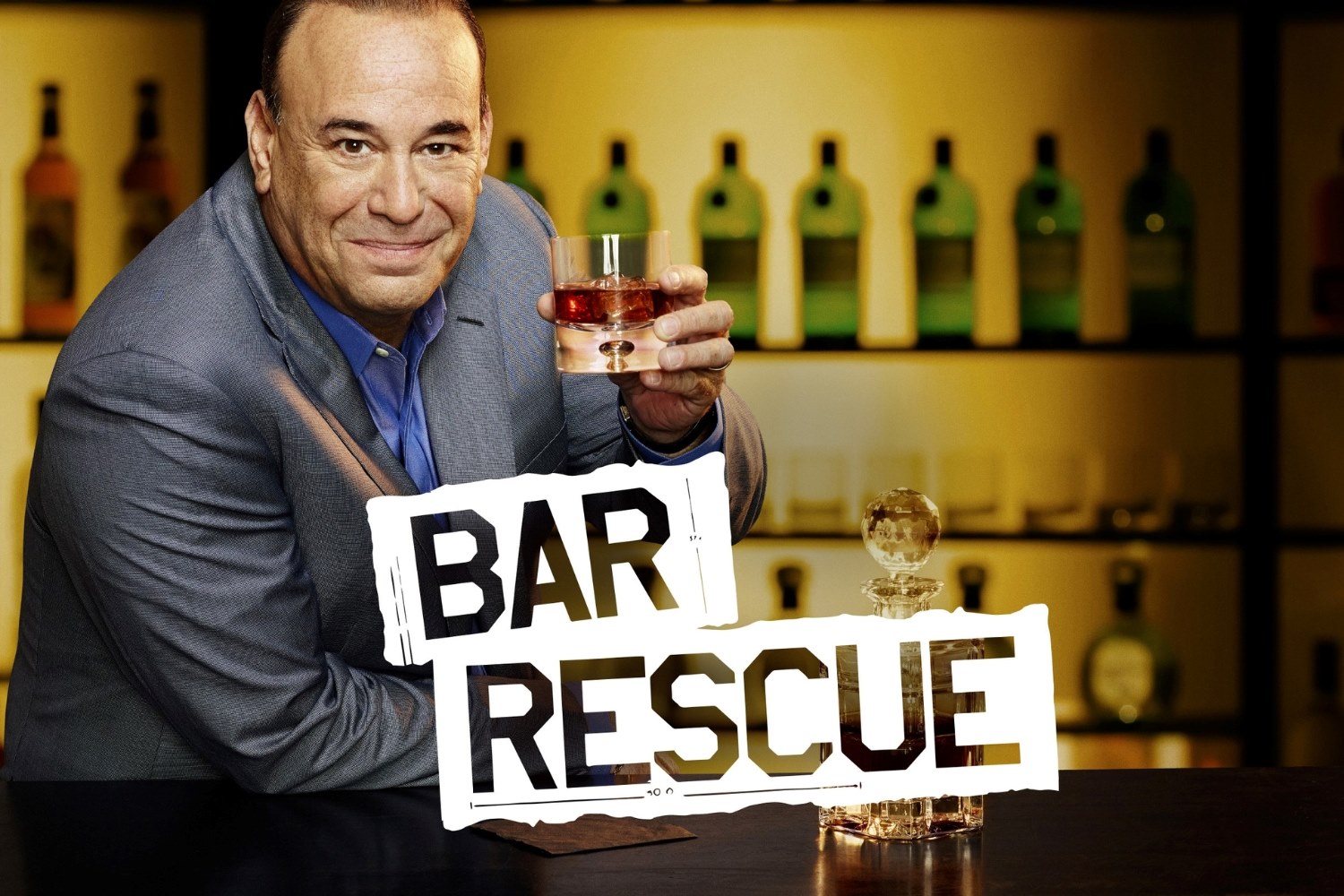Home>Health and Wellness>The Shocking Truth Behind Black Mold In Your Bathroom Corners


Health and Wellness
The Shocking Truth Behind Black Mold In Your Bathroom Corners
Published: January 31, 2024
Discover the hidden dangers of black mold in your bathroom corners and its impact on your health and wellness. Learn how to protect yourself from this harmful substance.
(Many of the links in this article redirect to a specific reviewed product. Your purchase of these products through affiliate links helps to generate commission for Noodls.com, at no extra cost. Learn more)
Table of Contents
Introduction
Have you ever noticed dark, slimy patches lurking in the corners of your bathroom? You may have brushed them off as mere dirt or grime, but what if I told you those unsightly patches could be something far more sinister? Black mold, a notorious troublemaker, often takes up residence in damp, poorly ventilated areas, and your bathroom is a prime target.
In this comprehensive guide, we'll delve into the shocking truth behind black mold in your bathroom corners. We'll uncover the insidious nature of black mold, explore its favored habitats, and shed light on the potential health risks it poses. Moreover, you'll learn how to identify black mold in your bathroom and discover effective strategies for preventing and eradicating this unwelcome guest.
So, fasten your seatbelts and prepare to embark on a journey through the shadowy realm of black mold. By the end of this enlightening exploration, you'll be equipped with the knowledge and tools to combat this persistent intruder and safeguard your home and well-being.
What is Black Mold?
Black mold, scientifically known as Stachybotrys chartarum, is a type of fungus that thrives in damp, humid environments. It is notorious for its dark greenish-black appearance and slimy texture, often resembling soot or dirt. This unwelcome guest is not just an eyesore; it poses potential health risks and can wreak havoc on indoor air quality.
Black mold is a resilient organism, capable of thriving on a variety of surfaces, including drywall, wood, and paper. It flourishes in areas with excessive moisture, making bathrooms, basements, and poorly ventilated spaces its favorite haunts. This stealthy invader can take hold in hidden nooks and crannies, making detection a challenging task.
One of the most concerning aspects of black mold is its ability to produce mycotoxins, which are toxic compounds that can be harmful to humans and pets. Prolonged exposure to these mycotoxins can lead to a range of health issues, including respiratory problems, allergic reactions, and even neurological symptoms in some cases.
Identifying black mold can be tricky, as it often masquerades as ordinary dirt or grime. However, its characteristic slimy texture and dark coloration set it apart from benign substances. Moreover, its musty odor can serve as a telltale sign of its presence.
In essence, black mold is a formidable adversary that thrives in moisture-laden environments, poses health risks, and demands swift and decisive action for its eradication. Understanding its nature and characteristics is the first step in combating this stealthy intruder and reclaiming a safe and healthy indoor environment.
Where Does Black Mold Thrive?
Black mold, with its insidious nature, seeks out environments that offer the perfect combination of moisture, warmth, and organic matter. These conditions provide an ideal breeding ground for this troublesome fungus, allowing it to proliferate and wreak havoc on indoor spaces. Understanding the favored habitats of black mold is crucial for preemptive measures and effective eradication.
-
Damp and Poorly Ventilated Areas: Black mold thrives in areas with high humidity and poor air circulation. Bathrooms, especially those with inadequate ventilation, provide an inviting environment for black mold to flourish. The steam from showers and baths creates a moisture-rich atmosphere, while the lack of proper ventilation traps this moisture, creating an ideal setting for black mold growth.
-
Leaky Plumbing and Water Intrusion: Any form of water leakage, whether from plumbing issues, roof leaks, or seepage through walls, can create a conducive environment for black mold. The presence of moisture from these sources, if left unaddressed, can lead to hidden mold growth behind walls, under flooring, and in other concealed spaces.
-
Organic Materials: Black mold thrives on organic materials such as drywall, wood, and paper. When these materials become damp due to water damage or prolonged exposure to moisture, they provide a nutrient-rich substrate for black mold to colonize and spread.
-
Basements and Cellars: These areas are particularly susceptible to black mold infestations due to their tendency to be damp and poorly ventilated. The lack of natural light and airflow, combined with the potential for water seepage, creates an environment that is highly conducive to black mold growth.
-
Furniture and Upholstery: Upholstered furniture, especially in areas with high humidity, can become a breeding ground for black mold. This is particularly true for furniture located in basements, attics, or other areas with poor ventilation and elevated moisture levels.
By understanding the preferred habitats of black mold, homeowners can take proactive measures to mitigate moisture issues, improve ventilation, and address water damage promptly. These preventive actions can significantly reduce the risk of black mold infestations and contribute to a healthier indoor environment for all occupants.
Health Risks Associated with Black Mold
Black mold poses significant health risks, making it more than just a cosmetic nuisance. Prolonged exposure to this insidious fungus can lead to a range of health issues, particularly for individuals with respiratory conditions, allergies, or weakened immune systems.
One of the primary concerns associated with black mold is its ability to produce mycotoxins, which are toxic compounds that can have adverse effects on human health. Inhalation of these mycotoxins can lead to respiratory problems, including coughing, wheezing, and throat irritation. Individuals with asthma may experience exacerbation of their symptoms when exposed to black mold spores, leading to increased difficulty in breathing and heightened respiratory distress.
Moreover, exposure to black mold can trigger allergic reactions in susceptible individuals. Symptoms may include sneezing, nasal congestion, itchy or watery eyes, skin irritation, and exacerbation of existing allergies. These allergic responses can significantly impact the quality of life and overall well-being of affected individuals, particularly in environments where black mold infestations are pervasive.
In some cases, prolonged exposure to black mold has been linked to more severe health issues, including neurological symptoms. While less common, neurological effects such as headaches, dizziness, and cognitive impairment have been reported in individuals exposed to high levels of black mold for extended periods. These symptoms can be particularly concerning and may necessitate medical intervention and environmental remediation to mitigate the risks.
Furthermore, individuals with compromised immune systems, such as those undergoing chemotherapy or organ transplant recipients, are at heightened risk of experiencing severe health complications from black mold exposure. The presence of black mold in indoor environments can pose a significant threat to their health and well-being, necessitating proactive measures to minimize exposure and mitigate the risk of adverse health outcomes.
In essence, the health risks associated with black mold are multifaceted and can have far-reaching implications for individuals and families. Understanding these risks underscores the importance of promptly addressing black mold infestations and implementing effective strategies to prevent its proliferation. By prioritizing indoor air quality and taking proactive measures to combat black mold, individuals can safeguard their health and create a safer and healthier living environment for themselves and their loved ones.
Identifying Black Mold in Your Bathroom
Identifying black mold in your bathroom is crucial for taking prompt action to address the issue and prevent its further spread. While black mold can often masquerade as ordinary dirt or grime, there are several key indicators that can help you distinguish it from benign substances.
-
Distinctive Appearance: Black mold typically presents as dark greenish-black patches with a slimy or fuzzy texture. These patches often appear in corners, along grout lines, or on the surfaces of walls and ceilings. The characteristic appearance of black mold sets it apart from regular household dirt or mildew, making it easier to identify once you know what to look for.
-
Musty Odor: Black mold often emits a musty, unpleasant odor that can permeate the air in affected areas. This distinctive smell is a telltale sign of mold growth and can help you pinpoint its presence, even if visual cues are not immediately apparent. If you notice a persistent musty odor in your bathroom, it may indicate the presence of hidden mold growth.
-
Moisture Accumulation: Since black mold thrives in damp, humid environments, areas of your bathroom that are prone to moisture accumulation are prime locations for mold growth. Pay close attention to areas near showers, bathtubs, sinks, and toilets, as well as any areas with past water damage or leaks.
-
Discoloration and Staining: Keep an eye out for any discoloration or staining on bathroom surfaces, particularly in hard-to-reach corners and behind fixtures. Black mold can cause surfaces to appear discolored or stained, signaling its presence and the need for further investigation.
-
Allergic Reactions: If you or your family members experience unexplained allergic symptoms such as sneezing, coughing, or skin irritation that seem to worsen when in the bathroom, it could be a sign of black mold exposure. Pay attention to any unusual health reactions that may point to the presence of mold in your bathroom.
By remaining vigilant and attuned to these identifying factors, you can proactively detect black mold in your bathroom and take decisive steps to address the issue. Early identification and intervention are essential for preventing the spread of black mold and mitigating its potential health risks for you and your household.
Preventing and Removing Black Mold
Preventing the growth and spread of black mold in your bathroom requires a proactive approach that addresses moisture control, ventilation, and regular maintenance. By implementing preventive measures and promptly addressing any signs of mold growth, you can effectively mitigate the risk of black mold infestations and maintain a healthy indoor environment for you and your family.
Preventive Measures
-
Effective Ventilation: Ensure that your bathroom is adequately ventilated to reduce moisture buildup. Proper ventilation can be achieved through the use of exhaust fans, open windows, or dehumidifiers. By expelling humid air and promoting air circulation, you can create an environment less conducive to mold growth.
-
Prompt Repairs: Address any plumbing leaks, water seepage, or moisture issues promptly. Regularly inspect and maintain plumbing fixtures, seals, and caulking to prevent water intrusion and minimize the risk of mold-friendly environments.
-
Surface Maintenance: Keep bathroom surfaces clean and dry to discourage mold growth. Regularly wipe down wet surfaces, such as shower walls, tubs, and sinks, and promptly address any water spills or splashes to prevent moisture accumulation.
-
Use Mold-Resistant Products: Consider using mold-resistant paint, grout, and caulking in your bathroom. These specialized products are designed to inhibit mold growth and can be valuable additions to your preventive maintenance efforts.
Removing Black Mold
If you discover black mold in your bathroom, swift action is essential to prevent its spread and mitigate potential health risks. Here are steps to effectively remove black mold:
-
Protective Gear: Prior to mold removal, ensure that you wear appropriate protective gear, including gloves, a mask, and eye protection, to minimize exposure to mold spores and mycotoxins.
-
Cleaning Solutions: Use effective mold cleaning solutions, such as a mixture of water and detergent, or specialized mold-killing products. Thoroughly scrub the affected areas to remove visible mold growth, and ensure that surfaces are completely dry after cleaning.
-
Proper Disposal: Dispose of any materials or items that are extensively contaminated with black mold and cannot be effectively cleaned. This may include porous materials such as carpeting, insulation, or drywall that have sustained significant mold damage.
-
Address Underlying Issues: Identify and address the underlying causes of mold growth, such as leaks or moisture accumulation. By resolving these issues, you can prevent future mold infestations and create a healthier bathroom environment.
By implementing these preventive measures and following effective mold removal practices, you can combat black mold in your bathroom and create a space that is inhospitable to its growth. Regular maintenance, vigilance, and swift action are key to preventing and removing black mold, safeguarding your home, and promoting a healthy living environment.
Conclusion
In the battle against black mold, knowledge is your most potent weapon. By understanding the insidious nature of black mold, its favored habitats, potential health risks, and effective prevention and removal strategies, you are empowered to safeguard your home and well-being. The truth behind black mold in your bathroom corners is indeed shocking, but armed with this newfound knowledge, you can take proactive steps to combat this stealthy intruder.
Prevention emerges as a cornerstone in the fight against black mold. Effective ventilation, prompt repairs of leaks and moisture issues, diligent surface maintenance, and the use of mold-resistant products form a formidable defense against mold growth. By creating an environment that is inhospitable to mold, you can significantly reduce the risk of infestations and maintain a healthy bathroom space for you and your family.
In the event of a black mold discovery, swift and decisive action is paramount. Equipped with protective gear and effective cleaning solutions, you can tackle mold growth head-on, ensuring thorough removal and proper disposal of contaminated materials. By addressing underlying issues and resolving moisture sources, you can prevent the resurgence of mold and fortify your bathroom against future invasions.
As you navigate the realm of black mold, remember that vigilance and regular maintenance are your allies. By staying attuned to the identifying factors of black mold and promptly addressing any signs of its presence, you can thwart its insidious advances and preserve a healthy indoor environment. Your commitment to proactive measures and swift intervention serves as a shield against the encroachment of black mold, ensuring that your home remains a safe and welcoming haven for all.
Ultimately, the shocking truth behind black mold in your bathroom corners underscores the importance of proactive measures, regular maintenance, and a deep understanding of mold prevention and removal. By arming yourself with knowledge and implementing effective strategies, you can emerge victorious in the battle against black mold, reclaiming your bathroom space and fostering a healthier living environment for you and your loved ones.














